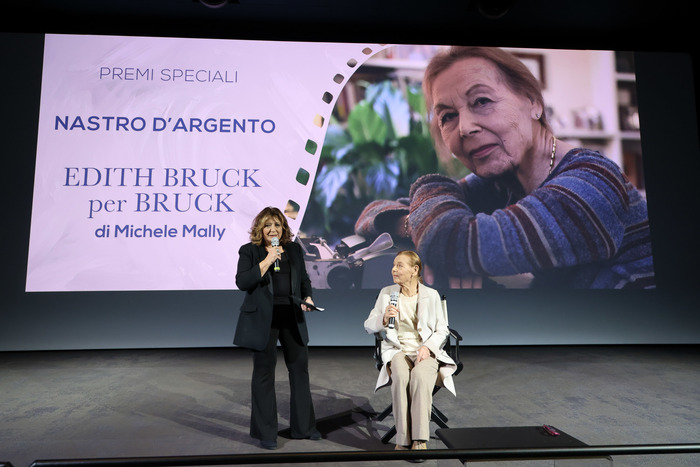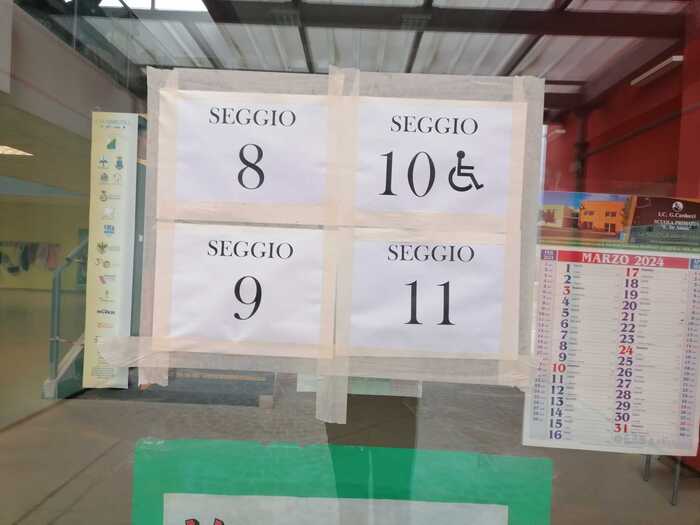Survivors in Hiroshima: A mother sits with her child in the rubble
Photo: Alfred Eisenstaedt / The LIFE Picture Collection / Getty ImagesNote: This text contains some drastic depictions that can be disturbing.
Hiroshima, August 6, 1945. This morning the sky is blue, little clouds paint contrasts. The day starts in a friendly way for the more than 300,000 people in the Japanese port city. Nobody knows exactly how many there are. Because next to the residents, refugees, prisoners of war and tens of thousands of soldiers crowd in the city.
An early air raid alarm, which startles many, is followed by the all-clear at 8:05 a.m. Once again, residents believe that Hiroshima was spared the bombing. Little did you know that the morning plane was a scout and has just given the radio permission for the bomb to be dropped.
Two more B29 bombers follow. One carries the bomb, the other cameramen and observers. But you can't see it from below, from the ground, from the target. And the people in Hiroshima have long been used to the fact that small groups of American bombers fly high above the city.
Whether they will survive this summery Monday morning depends on what they do or not do in the following minutes, where exactly they are, where they are going or where they are staying. World War II is coming to an end, and the US wants to speed it up. Only Japan is still being fought: In principle, the death of the residents of Hiroshima has therefore been a done deal for days.
Hiroko Kawaguchi, then eight years old, reports: "I didn't have a school, so I was out and about with other children in the neighborhood. When we saw that a B29 came flying, we immediately covered our eyes and ears. That should we do if it was thought a bomb might be dropped. Since I had covered my eyes, I did not see the lightning. "
Many of the survivors do not see the lightning. Some survive precisely because they do not see the lightning: They stand protected, in buildings, drive straight through tunnels, run randomly between two walls or are in a laundry room.
Many who see lightning have their skin boiling, their clothes catching fire. Those standing directly under the explosion simply disappear: it is debatable whether they literally evaporate or burn up so completely that their ashes are blown away. Some of their shadows burn themselves into the asphalt and walls in a heat of 6000 degrees. As if death was taking a picture.
First aid: Large burns were among the most common injuries to survivors
Photo: The Asahi Shimbun / Getty ImagesMakie Fujii, 22, is playing catch with her two young daughters on the upper floor of her house at 8:16 a.m. when a fireball crushes the windows and fills the space of the house, which collapses immediately. Makie feels sucked down and spilled.
"Below my feet my older daughter called: 'Mom, here, mom, here!' I shouted to her: 'Kazuko-chan, mom is coming to help you, hold on!' However, I was trapped by parts of the wall and couldn't even move my head. "
Her panic grows when she perceives the remains of the house on fire. She almost suffocates her youngest daughter, who is holding her tightly. When the little one screams, Makie screams: "The child is dying!" And leads her husband to her, who is frantically searching the rubble. He can dig up the two. They flee, the ruin goes up in flames. Kazuko, now dead, burns in the rubble. Makie's youngest daughter dies seven years later from the effects of radiation.
The power of the bomb
Estimates of the number of Hiroshima victims diverge considerably. The number of 80,000 people who lost their lives within a few days as a result of the explosion, the subsequent fires and the severity of their injuries is relatively safe - it is a minimum number, it could also have been 140,000. The number of victims due to the long-term effects of the Hiroshima and Nagasaki bombs, on the other hand, is highly controversial: Was it 700 or 20,000 or even 200,000? Which cancer was caused by the bomb and which not? Is a survivor who dies of cancer in old age still a radiation victim?
Either way, the toll in blood was monstrous and the injuries suffered hundreds of thousands of victims over decades. Any dispute about numbers ultimately comes across as cynical.
In 1945, numbers and comparisons were important - they contained a message that had been conveyed by bomb. According to US estimates, the Hiroshima bomb had an explosive power that would have required the charges of 2,000 conventional B29 bombers to unleash a comparable destructive power. An even more abstract figure: the 64 kilograms of uranium from the bombshell, nicknamed "Little Boy", caused an explosion that would have required 13,000 to 15,000 tons of TNT. You can't, you don't want to imagine that either.
Lightning spared eight-year-old Hiroko Kawaguchi, and a wall saves him from the shock wave. Now he runs home, scared for his mother and two siblings. He finds brother and mother: She has severe burns and "a large dented point on the head".
But she is alive, and she is terrified for Hiroko's sister. They start looking for her in the ruins of the city. When black, radioactive rain falls, which bites into the skin, they duck under a piece of corrugated iron. The sister cannot find her: "She said on the morning of August 6 that she did not want to go to school. However, my mother planned to send her to the Yamanaka Girls' High School and did not let her miss school. That morning my mother had sent her to school as always. My sister never came back from there. "
The brothers search for her for days, the mother is now too weak for it, lies in the ruins of her house and waits: "The burns on the back did not want to heal. When we thought they had dried and healed, the skin suddenly peeled off The underside was full of maggots. They were stuck close together so that they could not be removed. Me and my brother slept next to my mother, but I was bothered by the foul smell that came from the maggots. "
She doesn't die until September 4th. Hiroko now knows well about death: "It was a great achievement of her to live a whole month with the big wound that had split her head. I think the only thing I wanted to do was to have my sister see, had kept my mother alive. "
After the World War, Hiroshima became a kind of unit of measurement for nuclear madness: the horror caused was now measured in "kilotons". To this day, the Hiroshima bomb is used as a comparison to make the power of a weapon imaginable. Something like that always sounds very factual, but in truth it doesn't clarify anything.
What remained: In September 1945, a foreign reporter was stunned in front of the ruins of the exhibition hall, which today is a peace memorial and part of the world cultural heritage as the atomic bomb dome
Photo: Stanley Troutman / APBecause even the comparison does not make the unimaginable more vivid. Can you multiply the horror with kilotons? The AN602 "Tsar bomb" tested by the Soviet Union in 1961 had an explosive force of around 57 million tons of TNT, which is around 4,000 times the Hiroshima bomb. Such a thing cannot be measured precisely. And do not make imaginable either: Any comparison fails when one talks about bombs.
Chiyoko Shimotake is 24 and just married when the bomb falls. She only sees the light from afar, and soon after it rains charred paper from the sky. Three days earlier she went to see her parents in the country. The fact that she only wants to start her way back now, on August 6th, saves her life.
Chiyoko doesn't make it into town until two days later. Corpses are lying or burning everywhere. "At the sight I didn't feel anything, nor did I notice any of the stench. I think my senses were paralyzed."
She finds her family, who survived the explosion, but the mother-in-law has since died. "My father-in-law built a wooden box, we put my mother-in-law in it and burned her in the sweet potato field." Chiyoko sets her on fire because her father-in-law fails to burn his wife.
Her own husband, outwardly unharmed, dies seven days later while Chiyoko is preparing food. Hours later she also sets a fire on his pyre. When it burns, her despair gains the upper hand. She runs away, falls, burns her hands and knees. The ground is still so hot from the explosion it burns flesh, and the pyre around it doesn't make it any better.
"The next morning I went to collect my husband's bones. I can remember that I was surprised that there was no air raid, even though enemy planes were flying right over us. For a long time I did not know that the war was over was. "
The suffering the day after: if you touched the burned, an eyewitness reports, the other's skin stuck to your own fingers
Photo: Masami Onuka / Hiroshima Peace Memorial Museum / REUTERSJapan capitulated three weeks after a bomb fell on Nagasaki on August 9th. Did that indirectly confirm the justification for the drops? They were justified by wanting to force Japan into giving up because of the nuclear shock. This, so the Americans argue to this day, ultimately avoided an invasion that might have cost far more lives. Hundreds of thousands were allegedly saved by the death of tens of thousands.
more on the subject
Icon: VideoIcon: VideoAtomb bombing 1945: The trauma of HiroshimaA film by Anne Martin and Leonie Voss
Maybe it was like that.
The bombings also rearranged the global balance of power: The US was now the undisputed superpower. It was now clear that future wars could no longer be won with manpower and material. The Cold War, which was to follow the Second World War, which ended with the nuclear double strike against Japan, began with a technological arms race. Everyone wanted a "Hiroshima bomb" like this.
Four years later the Soviet Union also had nuclear weapons, shortly afterwards England and France. So-called overkill has been possible since the 1970s: the great powers have enough warheads to hit and destroy every strategic target of a potential enemy several times. That is enough to date for multiple world annihilations.
Burned-out tram: Those who took a tram out of town early enough in the morning survived. It wasn't too late and in the opposite direction
Photo: Yotsugi Kawahara / APMany of Hiroshima's survivors sustained visible, invisible injuries. All of them, however, bore a stigma precisely because they survived: the atom bomb is attached to them as a cause of harm and disease. They are still called Hibakusha to this day , and many of them try to hide the fact that they are bomb survivors.
Kyoko Fujie was nine years old when the bomb fell. She sees the braking parachute of "Little Boy" float from the sky when the train she is sitting on happens to be driving into a protective tunnel. At the other end, the passengers see a mushroom cloud instead of the city, "which looked very nice. The old woman who drove with me said: 'Oh dear, that's amazing!'"
From that moment on, Kyoko is a Hibakusha, though she gets away almost unharmed. Her little sister, only 16 months old, is different - she is outdoors with her mother when it happens: "My father and my cousin walked through town for two full days looking for them. When they found them, the body was mine Mother swelled so badly from the burns that it was no longer possible to tell whether she was a woman or a man. "
The men recognize her by the rags of her clothes, she doesn't live long. The little girl, on the other hand, will get well again and could grow into a fun-loving young woman - if it weren't for her foot, which was deformed by bulging scars. He stigmatizes her as Hibakusha: "At that time there were rumors that the diseases of the atomic bomb were contagious. People pointed their fingers at them and said: 'Careful, the finger is rotten' or 'Don't look up close, otherwise you will be infected '. "
When the sister turns 20, she goes to the USA. Kyoko lets her go: "I thought if she could leave Japan and live in a place where nobody knows her, she would probably find happiness there."
It wasn't until the mid-1980s that the Japanese public began to pay tribute to the fate of the Hibakusha.
Burned in scars: a stigma that made a young woman a hibakusha
Photo: Peace Memorial Museum / dpaThe contemporary witness quotes in this article are taken from video interviews recorded by staff at the Hiroshima National Peace Memorial Hall for the Atomic Bomb Victims from 2002 onwards. Since 2014, the Hiroshima-Nagasaki-Project of the University of Bonn has been producing German subtitles and transcripts of these interviews, which are created on a voluntary basis by students in the Department of Japanese Studies and Korean Studies. We thank you for the friendly cooperation.
The transcripts and videos, which are only reproduced here in brief excerpts, are harrowing testimonies, precisely because they are told from the perspective of the everyday life of those personally affected. Many of them are available in full length.
Icon: The mirror








